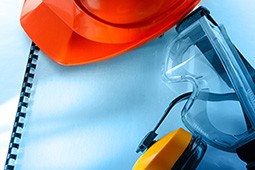Make Every Day National Safety Day
Tim Van Hoecke, QSSP, Safety Application Selling Manager
Safety Awareness
June is National Safety Month and it is a time when organizations focus on specific hazard awareness and safe practices. While emphasizing the importance of safety during June is great, the ultimate goal is to grow that behavior into a culture that exists every day of the year.
Workplace safety incidents are unexpected, untimely, often catastrophic and almost always preventable. The morning of a work-related safety incident the impacted worker, co-workers, middle management and the CEO did not plan for or expect their day to involve this unwanted event. Safety incidents change lives quickly and ultimately impact an organization’s goals and bottom line.
Safety Leadership and Overall Organization Impact

The best way to improve and achieve the desired year-round safety behaviors and practices is if the leadership within the organization understands how their safety program affects theirEmployees, Brand, and Profitability.
- Employees OSHA regulations require employers to provide a safe work environment, approved safety equipment, and training to protect their employees. Unsafe practices or injuries to employees can effect morale, employee retention, productivity, and result in lost revenue. Employees are the most important reason management should be involved in the safety program. Through active leadership and involvement they can ensure they are protecting what matters most.
- Brand Catastrophic or multiple safety incidents can reflect badly on a company’s reputation or brand. In our global economy organizations are evaluating their strategic partner’s entire operation, and this includes risk management practices. No one wants to have their brand associated with that of an unsafe partner. This also applies to nonprofit organizations that rely on outside sponsorship or support.
- Profitability –Loss of profits may be realized from OSHA fines, law suits, lost production and increased Workman’s Compensation Rates and Experience Modification Factors (EMFs) adjustments. An EMF is a formula that compares actual loss data with average loss data for all companies within a state. If your company is not safe your EMF can go up significantly. Another consideration that may impact a company’s bottom line is Sales Equivalent Dollars or SED. The SED is the sales required to make up for or cover the total cost of a workplace injury based on a company’s profit margin. An example of how this is calculated is below:
SED = Total Cost X 100%/% Profit Margin
Example:
$500 Direct Cost - Medical or Workman's Comp (Single Injury)
Indirect Cost - Administrative, Wages, Productivity 2X Direct Cost or $1000
Profit Margin Example = 5%
SED = $1500 x 100%/5% = $30,000 in Sales
In this example the above formula shows us that a company would have to generate an additional $30,000 worth of sales to offset the cost to the bottom line of this one minor injury.
Evaluating Your Program
There are many pressing job requirements or goals that drive our customer’s daily focus. Their primary responsibility may be to manufacture an item, conduct an experiment, or cut costs, and the ultimate outcome is to achieve this goal to the desired result. This may be the core competency that your organization performs to bring value or drive revenue and growth. So what are some of the things that should be done to ensure that safety is a daily competency and not just an ends to the means in your organization?
Hazard Communications (HAZCOM)
A thorough hazard assessment should be conducted of your entire facility to identify and either remove the hazard or ensure that your employees are properly trained and equipped with Personal Protective Equipment (PPE) to safely perform their jobs. A hazardous communications plan must be developed and made available to all employees, contractors and visitors. Most importantly management teams should be made acutely aware of the Hazcom program and safety requirements.
Personal Protective Equipment (PPE)
Personal Protective Equipment choices are just what the title says “very personal”. There may be employee concerns with comfort, fit, appearance, and even ergonomics. Getting employees to wear PPE correctly can be a challenge, but leadership support in the safety program can drive the desired behaviors. Cost can be a factor in PPE selection even though it should be considered last after hazard compliance, ANSI Standards, form, fit, and function. Safety equipment manufacturers are constantly working to improve these elements as well as product performance against the hazard. Choose a safety partner like Fisher Scientific that understands your entire business and processes, has dedicated safety specialist, product support teams, and works with industry-leading manufacturers to provide comprehensive safety solutions.
Drive Continuous Improvement
A safety program is a living thing that should encompass, grow and if needed change with the organization. New changes to OSHA regulations or requirements such as GHS while enforced to improve safety and reduce risk can put additional burdens on company resources to ensure compliance. These changes can also result in the need for additional training. This is why it is important to ensure that your safety equipment and service provider “ works for you to provide proactive solutions” that comply with changing regulations or standards. It is also essential that they are capable of supporting any unique safety requirements as your organization’s goals or strategies change. June is National Safety month, but make it your goal to make every day National Safety day. Fisher Scientific has the safety resources and support to help you achieve the goals that positively affect your safety program and your bottom line.